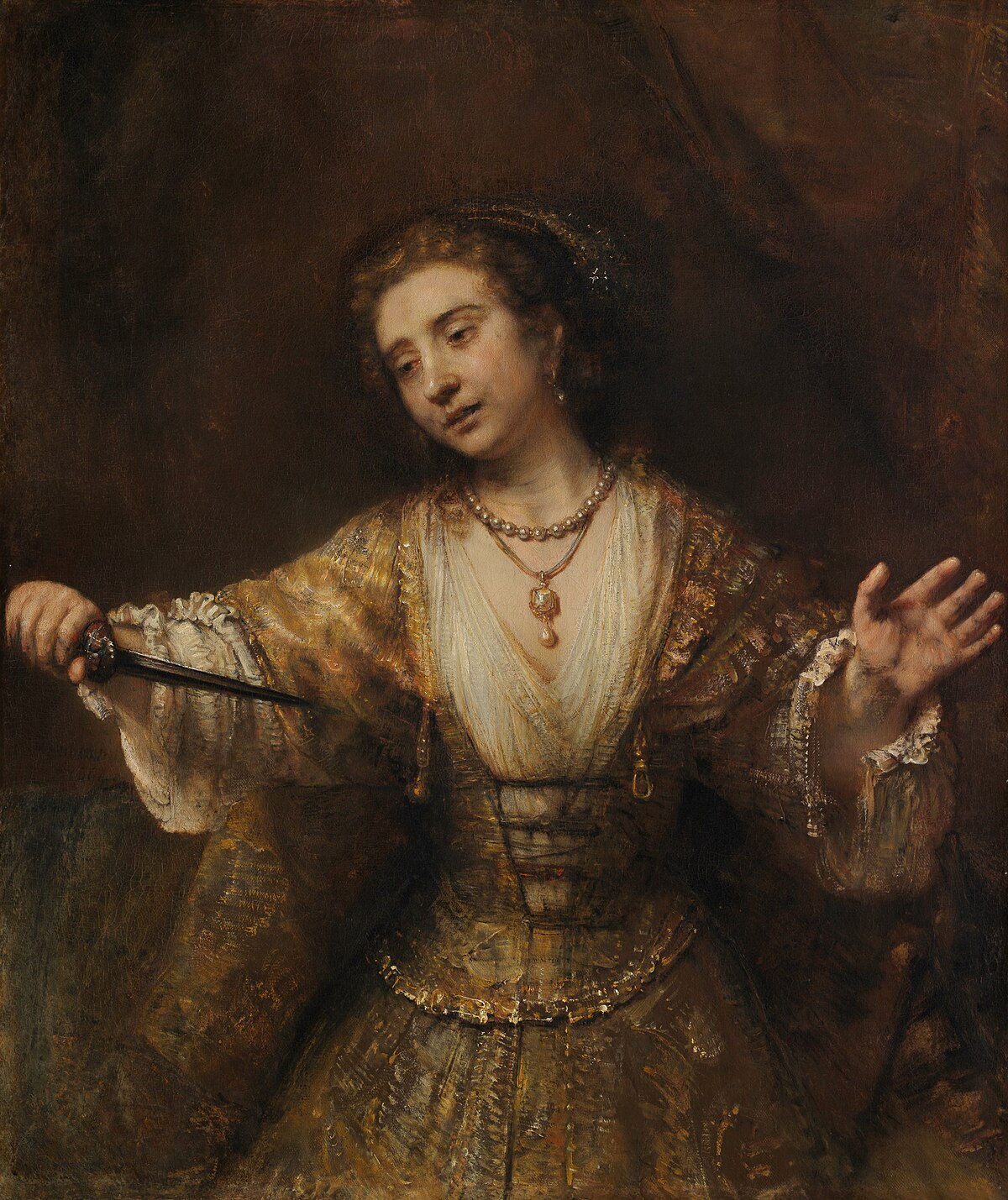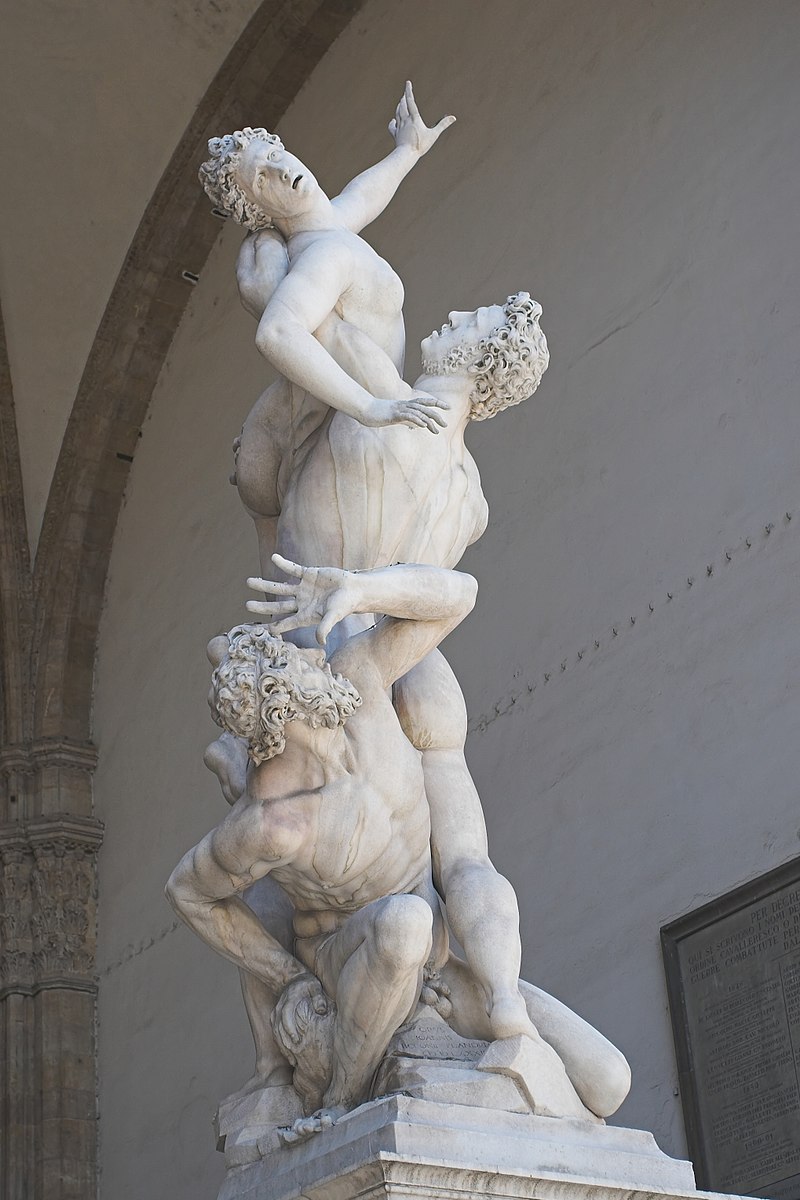Classics

Jacques-Louis David (French painter, 1748-1825). Intervention of the Sabine Women, Overall view without frame. 1799 (creation), Image: 4/31/09 (creation). http://library.artstor.org/asset/SS36066_36066_23794134. Web. 1 Dec 2017.
Just like the modernist age that was discussed in Prof. Simon’s class, there is a political statement within this image. The painter himself was a man who hid many meanings within his paintings, making political paintings during the French Revolution. This was something very common in the modern age, although the traditional “fine art” techniques are still used here rather than more abstract and chaotic methods used within the modernist era. It seems the peace that the women try to bring within the image is the main interest in the subject. Further research states that he made this in a time he was jailed, where the artist stated they wanted to draw something to the more Roman aesthetic.
The quote I chose for this piece specifically comes from Vergil’s book:
“The joyful peace, which put an abrupt close to such a deplorable war, made the
Sabine women still dearer to their husbands and fathers, and most
of all to Romulus himself.”
Although even in the intervention depicted in the illustration, the war still continue to unfold, the quote shows an importance to their role.
Art

During Unit 5 we learned more about the modern world that deviated from traditional techniques. The artist’s strokes became more apparent and the subjects within the painting didn’t look like they were going to bounce out at you anymore. With that, followed abstract art, or even messy looking art that at first glance looked as though it had no purpose in a gallery, but at second glance you can see every stroke had a purpose. This was somewhat the case with Marry Cassatt’s Woman on a Bench. The artist here was trying to capture life as she saw it with the little time she had. It was a form of experimentation, which is something a lot of the modernists art had.
Now if you’re looking for something even closer to present time than that then look no further than the video games we see around us. A YouTuber by the name of The Game Theorists covered such a topic in more detail on a video called Gaming is BROKEN! …What Comes Next? He speaks of how gaming is following the same pattern as modern art history. As time progressed, games have become more abstract and what could be considered a game or what makes a game is pretty loose with new genres being born.
We have managed to create life-like simulations within games. It looked as though you could almost touch the grass, or a video recording of the real world rather than 3D models generated through a computer. They have done an amazing job at immersing the player, making you feel like you were there, something art had striven to do. As The Game Theorist continues to point out that “…,but with so much progress and games being so beautiful and massive and textures feeling more and more real, where do you go now?”
This is where we arrive at post-modernism. All that progress and innovation removed, a rejection of modernism because “everything and anything can be art”. We see this same idea in indie gaming today with titles such as Rock Simulator and Pony Island. These are games that break the rules of what and how to play, and games that know their games. A trend we see in post-modernist art, where art knows it’s art. Even in some of the examples we saw in class, it was discussed that some of the artists purposely wanted you to see the painting as just that, a painting.
The difference between the past and the present is that we have become more interactive with the new art forms out there, after all even video games – something that tell stories like the paintings did – is considered art now a days.
Citations
Jacques-Louis David (French painter, 1748-1825). Intervention of the Sabine Women, Overall view without frame. 1799 (creation), Image: 4/31/09 (creation). http://library.artstor.org/asset/SS36066_36066_23794134. Web. 1 Dec 2017.
Cassatt, Marry. Woman on a Bench.1881. Pastel on Green Wove Paper.
Metropolitan Museum of Art, New York. Art History.
The Game Theorists. “Game Theory: Gaming is Broken! …What Comes Next?” Youtbe, commentary by Matthew Patrick, 26 Nov. 2017, http://www.youtube.com/watch?v=gxzKZdTxNp8.
-Yekaterina Ignatyeva, Team Cronos








 On campus I was able to find people to interview who haven’t been interviewed already. I interviews three students by the name of Jonathan B, Marlon C, and Malichi R. I interviewed all of these three in the student center on a Friday afternoon. The results of my first question were great with these three. They were all ok with me asking them ethnicity and origin questions and including there responses in my blog. When asked if they associated themselves with a country or ethnicity beyond the U.S, all answered with a one worded “No.” I asked Jonathan about how he learned about his American origins and he replied and said “My parents told me a lot about our history and my ancestors.” He also told me that another source of his knowledge comes from school. School was the only source of information that Marlon and Malichi had. When asked about being American, Jonathan told me that it was a honor. He then talked about his grandfather who fought in the army. Marlon shared with me that this beautiful vast country is the best place in the world. He talked about his family reunions which brings everyone together from all over the country. Malichi told me that he just loves hot dogs on July fourth. When asked for a story about someone their people idiolize, they all said president Barack Obama. Their stories all connected with the simple facts that he was the first black president and he got two terms. I followed up with asking what values do they think the story teaches. They all talked about the positive impact that had on the youth of minorities. They all seemed to of been personally influenced by Obama’s history.
On campus I was able to find people to interview who haven’t been interviewed already. I interviews three students by the name of Jonathan B, Marlon C, and Malichi R. I interviewed all of these three in the student center on a Friday afternoon. The results of my first question were great with these three. They were all ok with me asking them ethnicity and origin questions and including there responses in my blog. When asked if they associated themselves with a country or ethnicity beyond the U.S, all answered with a one worded “No.” I asked Jonathan about how he learned about his American origins and he replied and said “My parents told me a lot about our history and my ancestors.” He also told me that another source of his knowledge comes from school. School was the only source of information that Marlon and Malichi had. When asked about being American, Jonathan told me that it was a honor. He then talked about his grandfather who fought in the army. Marlon shared with me that this beautiful vast country is the best place in the world. He talked about his family reunions which brings everyone together from all over the country. Malichi told me that he just loves hot dogs on July fourth. When asked for a story about someone their people idiolize, they all said president Barack Obama. Their stories all connected with the simple facts that he was the first black president and he got two terms. I followed up with asking what values do they think the story teaches. They all talked about the positive impact that had on the youth of minorities. They all seemed to of been personally influenced by Obama’s history.












 Philippe Bertrand (French, 1663-1724). Lucretia. 1704 or earlier. The Metropolitan Museum of Art,
Philippe Bertrand (French, 1663-1724). Lucretia. 1704 or earlier. The Metropolitan Museum of Art, 













